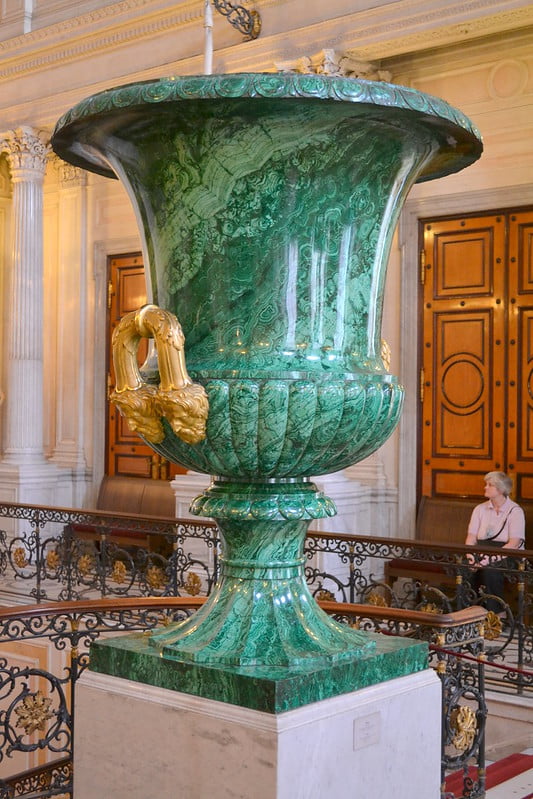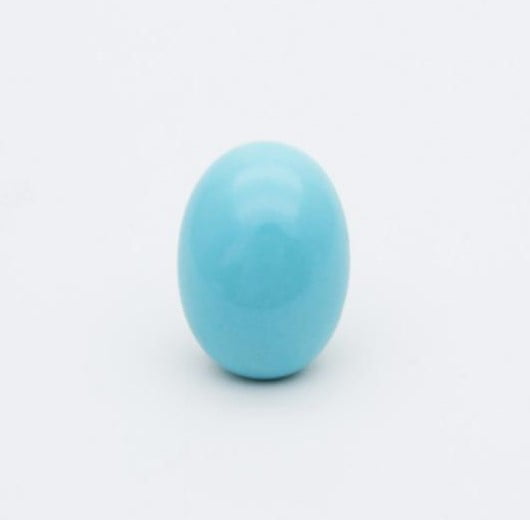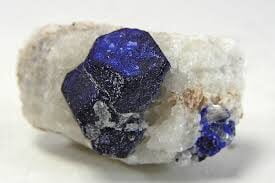Ornamental Gemstones: Lapis Lazuli, Malachite, and Turquoise
Ornamental gems have seen it used for millennia through ancient civilisations till the present day. The reason for its usage required tracing back to what ornamental is defined as. And its definition refers to things used to make something more attractive such as a piece of decorative item on a platform. Most of the gems that are used as an ornament usually lack transparency, but owe their attractiveness to the colour and patterns they possess.
There are many minerals that fit those descriptions, for instance chalcedonies, rhodochrosite, howlite to name a few. However, we will be spotlighting three very familiar ornamental gems that have been used as a gem and ornament for its unique appearance: Lapis Lazuli, Malachite, and Turquoise.
Let’s begin with lapis lazuli. Unlike the majority of the gems that exist as minerals, lapis lazuli is categorised as a rock. A metamorphic rock that composed of three separate minerals: Lazurite, a royal blue mineral that made up most part of the lapis; Calcite, the second most abundant mineral in a lapis that create white or grey stripes; and Pyrite, typically occurs in tiny grains form scattered around the lapis. Although this rock is relatively soft ranging from 3 to 5.5 on the Mohs hardness scale, we have seen on many occasions how a lapis is utilised into gems, sculptures, ornamental objects, and even pigments for millennia.

How lapis is used can best referred back to ancient Egypt where it was thought to be among their favorite gemstones. Mostly carved, they have created amazing pieces of ornamental lapis in different forms, notably a sphinx carved out of lapis. Other than that, yellow gold sculptures were set on lapis platforms that display stunning visual contrast, and many more. Not many countries produce lapis lazuli like Afghanistan in terms of quality and quantity. For thousands of years, the mountains of Afghanistan have brought us large amounts of fine lapis, even until today. It is not an easy task for the miners to endure the treacherous geographic mountain conditions while still practicing traditional mining methods. This century also caused their production to decline due to the country’s political instability and civil conflicts.

Of all kinds of lapis’s outward characteristics, a blue uniform body tone is most highly prized among collectors and jewellers. Inevitably, some calcite and pyrite may be present. If so, gold-coloured speckles of pyrite adds value to the stone, while calcite lowers its value.
Malachite on the other hand, is a green copper mineral. Deriving from the Greek word of “mallow”, referring to the colour of the mallow leaves. Well known for its distinguishable features of the green and circular bandings, malachite can give a good polish although being soft. Those bandings, which can be curvy or straight, alternate different shades of green with various thickness proves to be malachite’s signature characteristic.

Malachite is chemically composed of copper and it was one of the first and major ore to produce copper metal. Its abundance allows mankind to exploit it as early as 4000 years ago, particularly in Egypt. It has now served as a minor copper ore and primarily used as an ornamental material which can be seen in places like Russia. Russia once held large deposits of malachites that eventually made into astonishing objects and architecture like the giant malachite vase in Yekaterinburg and pillars in St. Isaac’s Cathedral in St. Petersburg. Some malachite fanatics even made a bathroom of malachite, from tiles to bathtub.

Last but not least, turquoise represents a stone worshipped for its cool soothing blue. Chemically composed of copper aluminium hydrous phosphate, its occurrence is quite similar as of the opals. Copper-rich solutions were collected by rainfall that seeps into cracks. When evaporation happens, copper is mixed with aluminium and phosphorus that slowly fills up the rock’s crevice. The colour of turquoise ranges from sky blue, to bluish-green and yellowish-green. Copper is the main culprit of the blue body tone and traces amount of iron is responsible for the green tint.
Not many gemstones embody blue like turquoise, and humans adore it. Of so many gemstones used by mankind, turquoise seemed to be one of the oldest. History has seen ancient civilisations from the New World to ancient Egypt made turquoise jewelleries with stunning visuals, and none used turquoise like ancient Egypt. They were one of the top consumers of turquoise due to their close proximity to the turquoise-rich country of Iran. Their usage of this mineral has even influenced neighbouring empires to get hold of this gem themselves, like the Romans.

Iran has definitely satisfied the lust for turquoise of Queen Cleopatra, and is still producing fine turquoise till this day. Due to that fact, turquoise eventually became the national gemstone of Iran. Some consider Iranian turquoise to be the best in the world. It possesses a rich blue colour and fewer matrixes. Along with the rich blue, they are sometimes distinguishable by its white patches. Good quality turquoise can also be found in several locations such as the USA and Chile, although their colour varies in hue and tone.

Other than its colour, the matrix is a significant feature of the turquoise. They are prone to have matrix markings which are inclusions of surrounding rocks where it is formed. The colour of the matrix can be brown, white, or better yet black, and it will depend on the type of host rock, commonly limestone or sandstone. The best of the matrix is black in colour and evenly distributed throughout the stone, known as “spiderweb”.
All these ornamental gems hold very specific beauty in their own rights, beauty that is exclusive to itself. Although many classified ornamental gems as semi-precious gemstones, the efforts put into retrieving these from their host rocks deserve credits. And surely enough we as consumers must appreciate, not just their appearance but also their existence because of one simple reason, gems and minerals are not infinite.


